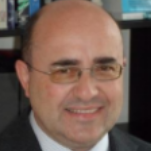
Pascual Marques
Work place: President at Marques Aviation, London, UK & CEO at Oxford Aerospace Academy, Oxford, UK
E-mail: p.marques@marquesaviation.com
Website:
Research Interests: Engineering
Biography
Dr. Pascual Marqués is the President at Marques Aviation Ltd., UK and CEO at Oxford Aerospace Academy, Oxford, UK. He holds MPhil and PhD degrees in Engineering Mechanics. At Marques Aviation Ltd., Dr. Marqués oversees the design, R&D, and manufacturing of the MA THOR unmanned aircraft series. Dr. Marqués’ research interests lie in the fields of Aerodynamics at low Reynolds numbers and Flight Dynamics, and he has published extensively on both subject areas. His recent research projects involve the implementation of theoretical aerodynamics for the design of low aspect ratio wings for applications in UAV engineering using numerical analysis, computer aided engineering (CAE), and computational fluid dynamics (CFD).
Author Articles
Artificial Intelligent Nonlinear Auto-Regressive External Input Neural Network Modeling, Design and Control of a Sea Wave Electro-Mechanical Power Generating System
By Murad Al Shibli Pascual Marques
DOI: https://doi.org/10.5815/ijisa.2019.06.01, Pub. Date: 8 Jun. 2019
Utilization of the sustainable and renewable sea wave energy has recently received special attention by the virtue of being a free, clean and zero-carbon footprint power source. This paper presents a novel approach to model, design, analyze and control a sea wave electric power generating system using an artificial intelligent nonlinear auto regressive with external input neural networks (NARX-NN). Modeling design, and analysis of an electro-mechanical power-generating system using linear permanent magnet generator attached to a dual spring-mass-damper platforms is introduced. The purpose of this proposed generator is to convert sea and ocean wave kinetic energy into a useful electrical power generated as a result of the linear motion core through an electromagnetic stator. One of the direct applications of the sea wave generator is to install one or more units on shipboard to contribute to its power utility needs whether it is moving or floating. The dynamical stability and compensator control of the spring-mass damper generator platform is analyzed along with its associated electric power. Faraday’s law based results show that the output induced voltage ranges from -60 to 60 volts (120 volts p-p). Moreover, artificial intelligent nonlinear auto-regressive neural networks are used to train, validate, and test the sea wave electric generator output. Two-layer NN are used to train the dynamical input-output relationship of the proposed system using one hidden layer that contains of 10 neurons. Two delays are used, one for motion input and one for voltage output. The NARX-NN training demonstrates that the network is being trained efficiently and tracks the actual sea wave electric generator output with a very low mean-square-error performance response without the need to measure the variables.
[...] Read more.Other Articles
Subscribe to receive issue release notifications and newsletters from MECS Press journals